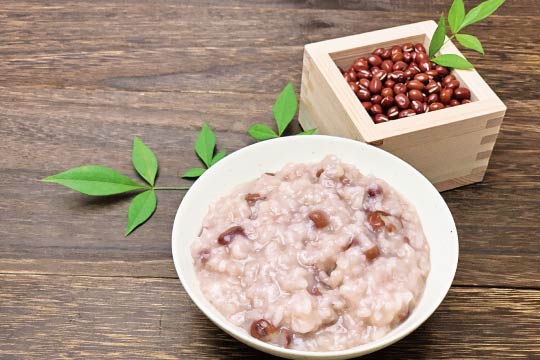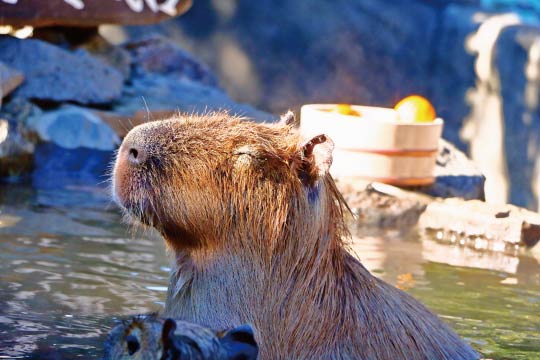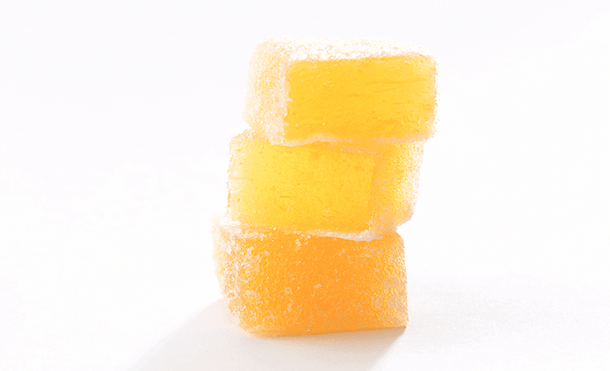News & Blogs
In this blog, we touch on diverse topics about Japanese food cultures, practices together with the culinary secret, TREHA®, and its important role in the Japanese food industry. We hope our blog helps you obtain in-depth knowledge of Japanese cuisine and the science behind it, which is hard to find elsewhere.
We touched on the Japanese custom to eat pumpkins to repel evil spirits during the winter solstice in the previous post. Today, let’s introduce other foods and a unique bathing practice called Yuzu-yu (柚子湯), which strongly connects with the winter solstice.
Food items to bring a lot of luck on the winter solstice day.
The Japanese follow traditional customs when daytime is the shortest, including appreciating the sun's energy, driving evils, and inviting luck. While the foods eaten on the winter solstice vary from region to region, items that end with "n ん" hit the list. Carrots (ninjin にんじん) for example, because the pronunciation of "n ん" sounds similar to "luck." This is called "luck piling" (un mori 運盛り), which the Japanese use to choose the food items on the winter solstice to attract more luck. Here is a parade of food items that have "n ん.” Pumpkin (なんきん nankin), lotus root (れんこん renkon), carrot (にんじん ninjin), ginkgo nuts (ぎんなん ginnan), kumquats (きんかん kinkan), and agar (かんてん kanten), and don’t forget, udon noodles (うどん). This luckiest food group on the earth has the honorable title of the "seven foods of winter."
The purpose of luck-piling has been not only for being auspicious but also the old wisdom to obtain sufficient nourishment to endure the winter. In addition, "n ん" is the last letter of the Iroha, a poem that contains each character of the Japanese syllabary precisely once, making it a perfect pangram. Using a lot of "n ん" gets us ready for the year's closing and welcoming spring, which symbolizes a new beginning. In some areas, people eat Konjac, which is now well known as shirataki noodles, to wash away one year's worth of toxin accumulated in the body to welcome a new year. In other areas, people eat red bean porridge (小豆粥 azuki gayu), believing the red color has the power to exterminate demons. People still practice the custom originally introduced by China many years ago.

How about taking a Yuzu bath (柚子湯) on the winter solstice?
Another remarkable custom is to take a hot bath with yuzu citrus floating in the bathtub (柚子湯). As many of you know, yuzu is a citrus fruit with a unique, refreshing aroma often used to complement many Japanese dishes. Due to its high acidity, like lemon, its zest and juice are typically used rather than fruit for eating.
According to the records, taking a hot Yuzu bath appeared in the Edo period (17th-19th centuries). One bathhouse in Tokyo started adding yuzu to its bathtub to promote their business using a pair of homophone wordplays; between "winter solstice 冬至" and "spa treatment 湯治", and between "yuzu citrus 柚子" and "having a strong body 融通." People in Edo (current Tokyo) loved the cool wordplays, and the new bathing custom on the winter solstice became prevalent. Yuzu contains a chemical compound called hesperidin, which supports healthy blood circulation. Taking a hot bath containing all the goodness of yuzu in the cold season could be the wisdom earned from experience. The yellow color of yuzu also has the meaning of expelling evil spirits.
Animals in Japanese zoos also enjoy the winter solstice bathing custom. Even capybaras follow a Japanese bathing custom of Yuzu bath on the winter solstice. The "Capybara Bath" started at zoos throughout Japan to attract visitors while making animals more comfortable during the winter months. Zookeepers came up with this idea since Japanese winter is hard for this giant rodent due to being suited to a warm and watery environment, as they evolved in South America. Look at that dreamy and relaxed face!

Are you interested in tasting yuzu or taking a bath with it?
If you choose to taste yuzu rather than take a bath with it, may we suggest Yuzu Fruit Jellies (Pâte de Fruits au Yuzu) using TREHA®? Here are the benefits of TREHA®:
tempers sweetness and allows the flavor and aroma of yuzu to stand out.
retains fruit color, preserving the beauty of the jelly.
minimizes "weeping" and prolongs quality.
Click here for the recipe.

Did you find this blog interesting?
Please share it with your friends in the foodservice industry.
We regularly update the blog about the food culture of Japan, where TREHA® was discovered for culinary applications.
Click here and send us a message to subscribe.
Or hit us up on Instagram @trehalose_sensei!
You might also be interested in:
Japanese traditional food series 2: Chitose Ame, candy for healthy longevity (千歳飴)
Japanese traditional food series 4: Noodles on New Year's Eve (年越しそば)
Japanese traditional food series 5: Japanese traditional New Year’s dishes, Osechi-ryori (おせち料理)
Japanese traditional food series 6: Another traditional food for New Year’s celebration, mochi (餅)
Japanese traditional food series 13: Inari sushi offered to a deity of harvests

